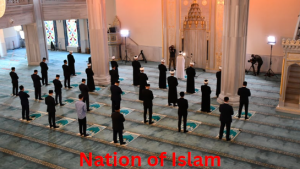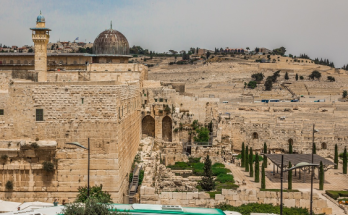In the intricate tapestry of religious movements, the Nation of Islam stands as a unique and often controversial thread. This analysis aims to delve into the origins, beliefs, activities, and impact of this organization that has left an indelible mark on the socio-religious landscape.
1. Origins and Historical Evolution:
The Nation of Islam traces its roots to the early 20th century, emerging as a response to the socio-economic challenges faced by African Americans. Founded by Elijah Muhammad, the organization underwent significant transformations over the decades.
2. Core Beliefs and Fundamental Tenets:
Central to the Nation of Islam’s ideology are unique beliefs that diverge from traditional Islamic teachings. These include the divinity of Elijah Muhammad, the concept of black superiority, and a distinct interpretation of Islamic principles.
3. Activities and Organizational Structure:
The organization engages in various activities, combining religious practices, community outreach, and advocacy. An exploration of its organizational structure reveals a hierarchical setup with leaders who play pivotal roles in shaping the narrative.

4. Controversial Stances and Criticisms:
The Nation of Islam has often found itself at the center of controversies due to its outspoken positions on race, politics, and societal norms. Understanding these controversial stances is crucial for a comprehensive analysis.
5. Interactions with Other Groups:
Examining the Nation of Islam’s interactions with other religious and social groups provides insights into its role within the broader spectrum of American and international affairs.
6. Media Coverage and International Responses:
Media plays a significant role in shaping public perception. Analyzing how the organization is portrayed in the media and the responses it elicits on the global stage offers a nuanced understanding.
7. Evolution Over Time and Major Changes:
As with any organization, the Nation of Islam has undergone evolution. Tracking these changes and understanding their implications helps in grasping the current state of the organization.
8. Challenges and Accusations:
Like many religious movements, the Nation of Islam has faced internal and external challenges. Delving into these challenges and accusations provides a balanced view of its struggles.
9. Impact on Local Communities:
Examining how the organization influences local communities sheds light on its societal footprint. Understanding the dynamics between the Nation of Islam and local authorities is crucial for contextualizing its impact.
10. Security Assessment and Classifications:
Given its controversial nature, various security agencies have classified the Nation of Islam differently. Exploring these classifications and their impact on national and international security is essential.
11. Internal Criticism and Dissent:
No organization is immune to internal criticism. Investigating instances of dissent within the Nation of Islam and their repercussions aids in comprehending its internal dynamics.
12. Current Status and Future Challenges:
A thorough analysis of the organization’s current status and the challenges it faces provides a snapshot of its resilience and adaptability in a changing socio-political landscape.
13. Intellectual and Ideological Impact:
The intellectual and ideological underpinnings of the Nation of Islam play a significant role in shaping its identity. Understanding the interplay between ideas and actions is crucial.
Conclusion:
In conclusion, the Nation of Islam remains a multifaceted entity, weaving through time with a complex narrative. Unraveling its layers requires a nuanced approach that considers its historical evolution, controversial stances, and impact on local and global scales.
5 Common Questions Post-Conclusion:
- Is the Nation of Islam as active today as it was in the past?
- The activity of the Nation of Islam has evolved over the years. While it may not have the same prominence as in the past, it remains active in advocating for its beliefs and engaging with its community.
- What are the main challenges currently facing the organization?
- The Nation of Islam faces various challenges, including criticisms of its controversial stances, internal dissent, and adapting to societal changes. Navigating these challenges while maintaining its core identity poses ongoing difficulties.
- Are there internal efforts to reform the structure or modify its methods within the Nation of Islam?
- Like many organizations, the Nation of Islam experiences internal discussions and debates. Efforts to reform or modify the structure may exist, reflecting the dynamic nature of the organization and its response to internal and external pressures.
- How can the international community effectively deal with the activities of the Nation of Islam?
- Dealing with the activities of the Nation of Islam requires a nuanced approach. Engaging in open dialogues, promoting understanding, and addressing the root causes of any concerns can be more effective than solely relying on punitive measures.
- Are there examples of individuals who were part of the organization and successfully left it?
- Yes, there are instances of individuals who were once associated with the Nation of Islam and later chose to disaffiliate. Understanding their experiences can provide insights into the factors influencing both membership and departure from the organization.


